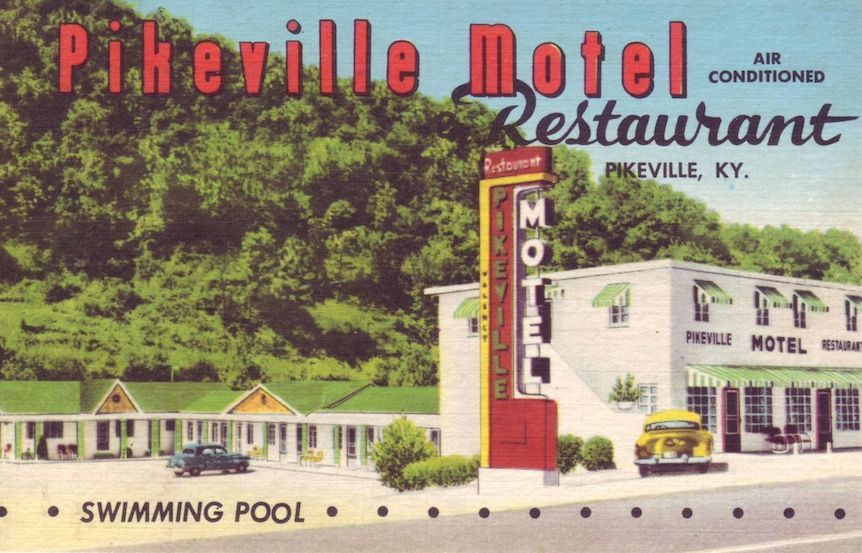The "no-tell motel," America's slightly repressed version of the Asian love hotel, is the accidental product of two seemingly unrelated trends of the 1960s and '70s (it's always preferable to have unrelated parents). In generous terms, the no-tell is the lovechild of Dwight D. Eisenhower and Helen Gurley Brown: President Ike began the Interstate Highway System, and Ms. Gurley Brown was a leading architect of the sexual revolution.
The Interstate Highway System was championed by President Eisenhower and begun in 1956. It took shape in the '60s and '70s, and long-distance car travel became more frequent than ever before. This drove the rapid appearance of inexpensive motor hotels along interstates and across vacation sites. Motels typically feature parking just outside each room, and are equipped with a small office rather than the full pass-through lobby of most hotels.
During the same period, American sexual mores were shifting. Helen Gurley Brown, author of Sex and the Single Girl (1962) and editor-in-chief of Cosmopolitan magazine from 1965, had at least as large an effect on the sexual re-landscaping of America as anyone during these two decades. Divorces instigated by women rose dramatically as their financial independence became more viable. Infidelity statistics for women increased at a higher rate than men: more women in the workplace meant more women "working late," and more women were willing to discuss this formerly taboo subject. Adultery was also effectively decriminalized in most states during this era. In short, more adults were adulterous with each passing year in the Age of Aquarius.
Obviously, Mrs. Jones couldn't be seen smooching Mr. Smith, so "your place or mine?" was out: there had to be a quiet, dark neutral ground. The no-lobby, park-at-your-door design of typical motels was intended for traveling families. There was no bellhop needed, and Dad didn't have to lug the luggage more than about twenty feet. But a side effect was anonymity: a guest could easily register his "wife" (or for May-December liaisons, his "daughter") without revealing her to the management—and if the clerk seemed especially incurious, a guest could neglect to mention his playmate entirely.
Some no-tells took the clandestine hookup theme all the way—charging by the hour, installing ceiling mirrors, and/or establishing a reputation for safeguarding client anonymity. Motels with an especially high tolerance for shenanigans would even turn a blind eye to underage drinking parties (and worse), but secret middle-aged sex tended to cause far less havoc to the room than teenage bourbon busts. Most motels, however, chose to cater primarily to the wholesome traveling family, and reacted with varying degrees of vigilance or ignorance to their down-low and/or low-down clientele.
The rise of hotel chains along the interstates began in the '70s, but didn't reach full steam until the 1980's. The long "L" shape of the typical midcentury motel design made it difficult to adapt the building to other uses, so as the chains overran the commercial landscape, hundreds of indie motels were demolished across America in subsequent decades. "Classic" independent motels are now a relative rarity, so if you know of a surviving no-tell motor court, remember that it deserves your admiration if not your full respect.
Story by Hap Houlihan.


